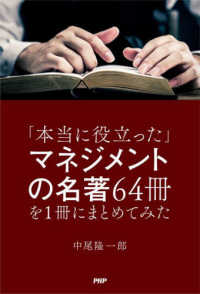Full Description
With its 155 mile-per-hour sustained windspeeds, the near-Category 5 Hurricane Maria brought catastrophic devastation and destruction as it diagonally crossed the Commonwealth of Puerto Rico from the southeast to the northwest on September 20, 2017. The official death toll estimate of 2,975 lost lives means this record storm became one of the most devasting hurricanes not only for Puerto Rico but for the U.S. Many of these deaths, as well as the prolonged human suffering, were attributed to what was described as inadequate disaster response and slow restoration of basic services (including running water, electricity, and the provision and distribution of food and medicine), and not to the direct impact of the hurricane itself.
At the same time, Hurricane Maria made landfall when Puerto Rico had been confronting a severe economic crisis surging for over a decade. This crisis, referred to as La Crisis Boricua, was characterized by a significant loss of industry and jobs, a deteriorating infrastructure, record net outmigration, a shrinking and rapidly aging population, rising healthcare under-coverage, a bankrupt government, and federal legislation restricting fiscal policy decisions made by elected officials on the island. Thus, Hurricane Maria exacerbated the effects of La Crisis Boricua on the socioeconomic, health, and demographic outcomes affecting Puerto Ricans on the island and U.S. mainland.
Bringing together scholars from a wide variety of disciplines (including economics, sociology, demography, health, psychology, disaster research, political science, education, the arts, and others), this volume represents one of the first interdisciplinary sets of studies dedicated to analyzing the effects of Hurricane Maria on island and stateside Puerto Ricans. Specific topics cover Hurricane Maria's impact on labor market outcomes, including wages and employment by industry; health implications, including mental health; changes in artistic expression; civic engagement; and disaster response and recovery. A common thread through many of the chapters was the destruction of Puerto Rico's electrical grid and the prolonged restoration of electricity and other essential services that resulted in the loss of thousands of lives.
Contents
Chapter 1: Hurricane Maria in Puerto Rico: Context and Ramifications by Marie T. Mora,
Havidán Rodríguez, and Alberto Dávila
Chapter 2: Employment and Wages in Puerto Rico after Hurricane Maria by María E.
Enchautegui
Chapter 3: Hurricane Maria's Impact on Puerto Rico's Labor Market: Job Losses, Wage Changes
and Recovery of Municipalities Close to the Epicenter by Zadia M. Feliciano
Chapter 4: Hurricane Effects on Industry Employment: Evidence from Puerto Rico by José
Caraballo-Cueto
Chapter 5: Understanding Hurricane Maria: Disaster Response as Transition Management by
Marla D. Pérez-Lugo, Cecilio Ortiz-García, and Didier Valdés
Chapter 6: Health and Healthcare Delivery in Puerto Rico Before and After Hurricane Maria by
Jose M. Fernandez
Chapter 7: The Health Profile of Puerto Ricans Before and After Hurricane Maria by Fernando I.
Rivera, Rebecca Sanchez, Valeria Quiñones, Veronica Arroyo Rodriguez, and Adriana
Solla
Chapter 8: Expected Impacts and Consequences of Hurricane Maria and Power Out








